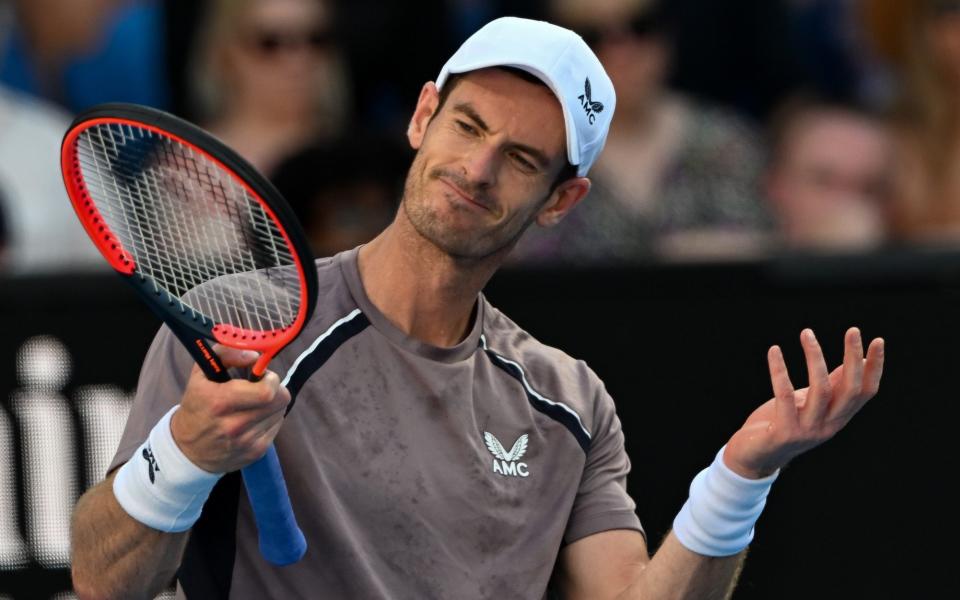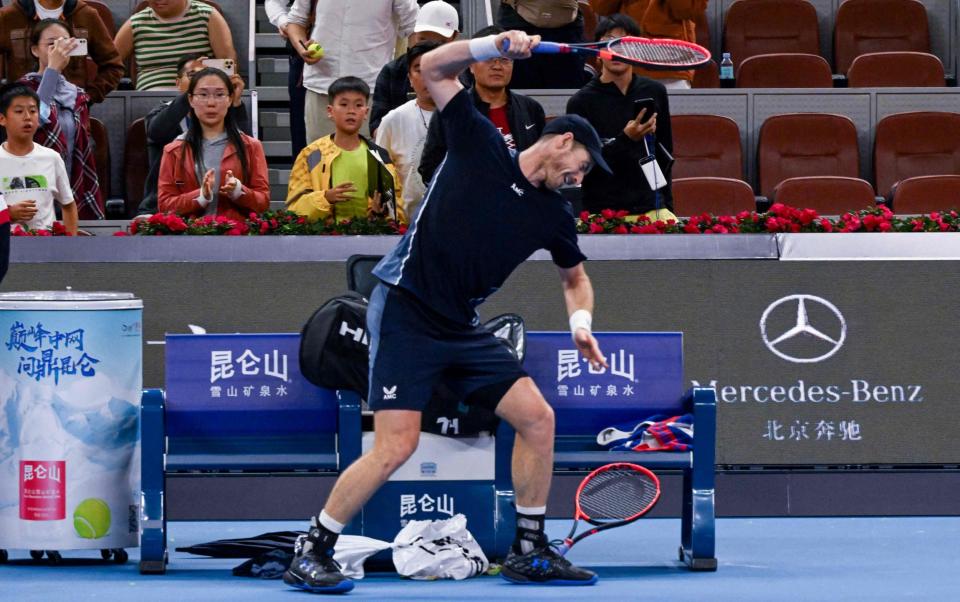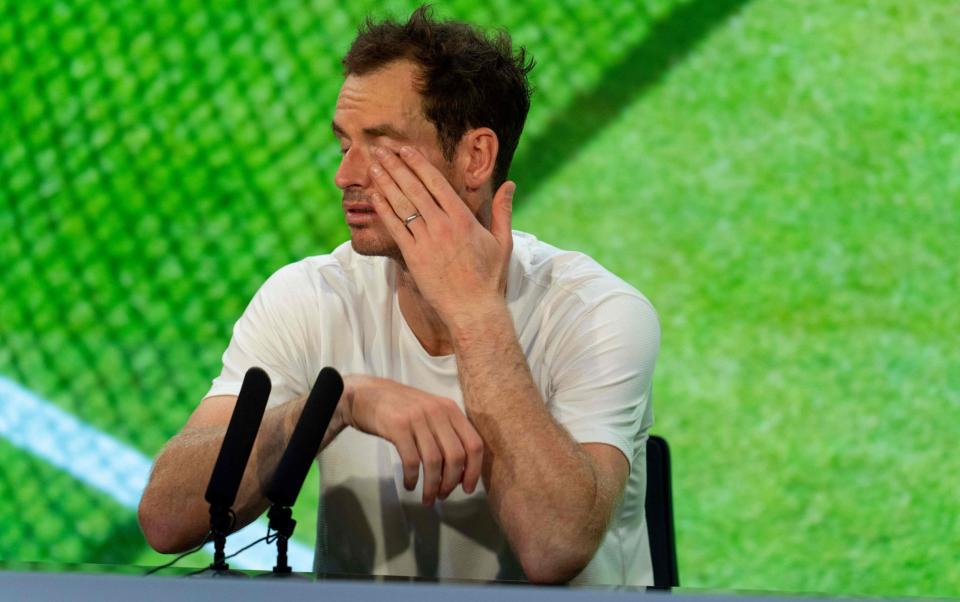Andy Murray’s refusal to retire is deeply personal

Athletes die twice, the saying goes. Once at the end of their lives, and once when they retire from competition. But for Andy Murray, who never does things the easy way, that saying could be upgraded to “thrice”.
In sporting terms, Murray has already made one impossible comeback. It’s now a little over five years since he broke down in tears at the Australian Open, earning a retirement video studded with warm tributes. Now the curtain is approaching for the second time – probably at July’s Paris Olympics.
We always knew that Murray 2.0 would fall short of the original model. Like Spitting Image – which attempted a reboot at around the same time – he was destined never to regain his former relevance.
Yet there have been some thrilling moments nonetheless. Installed with a metal hip at the start of 2019, Murray miraculously landed an ATP title in Antwerp only nine months later.
Or think of the early weeks of 2023 – a hot spell in which he kept escaping from the most unpromising positions. Over in the press room, we reporters were grateful for some upbeat storylines in an otherwise snoozy start to the new tennis season.
More recently, though, Murray has been shambling around the court like a man wearing a weighted jacket. His is now a zombie career, a narrative on life support, as he struggles on towards those marquee farewells at Wimbledon and the Olympic Games.
In all probability, Murray is as surprised as anyone by his rapid decline. He had three top-20 wins in 2023, and reached an ATP final in Doha, finishing the season at a respectable ranking of No 42. On this year’s results, though, he would stand just outside the world’s top 150.
Like Ernest Hemingway’s bankruptcy, Murray’s slump arrived in two ways: gradually, then suddenly. The former top-tenner Andea Petkovic put it well last week, when she wrote that the gradient of a tennis player’s decline is shallow, mitigated by nutritional supplements and medical sleight of hand. “Then one day you wake up and it has come for you with a thump.”
If there was a dividing line for Murray, it can probably be traced back to the match in Beijing in September where he squandered a 5-2 deciding-set lead against Alex de Minaur. That impacted hugely on his confidence, and sent an unfortunate message around the locker room: there’s no position, when playing Murray, from which a comeback is not possible.

Not that Murray is Robinson Crusoe here. A loss of bottle is a common symptom among ageing athletes. Even a “greatest-of-all-time” contender like Serena Williams lost her edge in finals after returning from maternity leave.
What makes Murray more unusual is his determination to keep forging on despite a physical handicap that will always be a limiting factor. The closest analogy is Lleyton Hewitt, the 2002 Wimbledon champion who continued playing singles for more than four years after having his big toe immobilised by a metal plate. “Retirement talks have been around since I was 26,” said Hewitt, shortly before the operation. “It’s a load of rubbish.”
Murray hasn’t enjoyed being quizzed about his plans either. Last month, he bit back angrily at a BBC reporter who questioned whether his recent struggles were tarnishing his legacy. As he explained, “I just didn’t agree that somehow by competing now, I was affecting what I achieved when I was fit and healthy and had two hips.”
This was a convincing argument. Does anyone think less of Money or The Rachel Papers because Martin Amis’s late novels became critical punchbags? The answer must be “no”. Yet one can’t help wondering whether Murray would do it all over again, if he knew that his post-surgical self would never make it past the third round of a major.
That record at the slams – and especially at Wimbledon – is surely the most significant entry in the debit column. Murray version 1.0 had a ratio of four-and-a-quarter grand-slam wins to every loss, meaning that his average result was slightly better than quarter-finals. But for Murray 2.0, each outing at a major is a coin-toss, with only 11 wins accruing from 22 attempts. Par, now, is second round.
In such a context, you can see why Murray was so crushed by last summer’s Centre Court exit at the hands of Stefanos Tsitsipas. For once, the draw looked to be opening up for him, with clay-loving Laslo Djere to play the winner, and first-time visitor Christopher Eubanks waiting in the last 16.
Yet events conspired against him, as they so often do when you’re desperate for a break. Wimbledon’s 11pm curfew saved a grumpy, misfiring Tsitsipas when he was trailing by two sets to one on Thursday night. Then, in Friday’s decider, a bad line call robbed Murray of his best chance of breaking serve. Even at the time, there was a sense that Murray had missed his big moment.

Much of this saga has been about the search for a neat ending. As Murray told the makers of the Resurfacing documentary in 2019, he felt he “deserved a better outcome” than the sudden shutdown of 2017. (French Open semi-final one day, scrapheap the next.) Yet sport is notoriously cruel in this way. For most athletes, the fairytale finale is like the end of the rainbow: it just keeps moving further away.
Another of Murray’s motivations is that he hates being told he can’t do something, and draws strength from his history of proving people wrong. Fuelling himself from some dark corner of his soul, he loves the struggle so much that his favourite press-conference word is “tough”.
Some observers find this aspect of his career compelling: the tale of a gifted mortal who did battle with the tennis gods, like some tennis Hercules, and seized the occasional victory through sheer stubbornness. Others – an increasingly numerous group, judging from social media – resent him for not being able to tap-dance his way to victories with Roger Federer’s sweatless sheen.

One of Murray’s aspirations for his comeback was to be more dignified on court. He wanted to swap the vinegar for something sweeter, to look at Federer and say “I’ll have what he’s having”. And he did manage to cut down on the chuntering and fuming for a few months, during the second-honeymoon period leading up to the Antwerp title in October 2019.
Even then, though, Murray had enough self-awareness to wonder how long his new leaf would last. “Right now, everything I am doing around tennis is a lot more enjoyable,” he told Telegraph Sport during that tournament. “But maybe when I get back to competing at slams, I might start to put more pressure on myself.”
Pressure. It lies at the heart of Murray’s story. First there was the external pressure to end the 77-year-wait for a homegrown Wimbledon champion. Now there is the self-imposed pressure to transcend biology. It seems likely that Murray is addicted to the stuff.
Without pressure, there is no adrenaline. And this is why I suspect that, even if he’d known that he would never regain a Wimbledon seeding, Murray would still have signed up for this second coming. As he said in his response to the BBC article, “Most people would quit and give up in my situation right now. But I’m not most people and my mind works differently.”
Amidst all the chatter, it’s easy to forget that a highest position of No 37 remains an extraordinary achievement for a man with a bionic hip. Murray will no doubt cite this as reason enough for his quest, and will look back on his return to Planet Tennis as a precious second chance, a reprieve from his own sporting mortality. Even if, at the same time, it has been a bumpy experience all round.

 Yahoo Sport
Yahoo Sport 





































